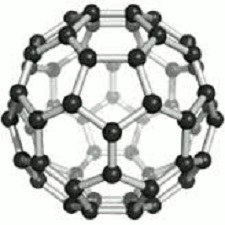توضیحات
ABSTRACT
A composite of Zr-doped TiO2 and carboxylic multiwall carbon nano tube (MWCNT-COOH) as a support was successfully synthesized by using Sol-Gel method. Increasing specific surface area of TiO2/Zr nano photocatalyst (NPC), perform by padding the catalyst on substrate of (MWCNT-COOH). The porous structure of catalyst with high specific surface area obtained via calcination phase by removed carbonaceous structure.TiO2 with Zr as dopant lead to high photo catalyst activity and decreasing BG energy. Decolorization ability of NPCs monitored by using UV–Vis spectrophotometer. Padding of TiO2 on MWCNT- COOH as substrate cause high specific area and the best photocatalytic activity. Properties of support and catalyst were characterized by SEM, TEM, XRD, FT-IR and BET. For photocatalytic applications, the band gap of the synthesized semiconductors was determined. The TOC analysis has perform for proving the Decolorization of Acid Red 88 as a Azo dye. TiO2/Zr/MWCNT-COOH was the best performance.
INTRODUCTION
Industrial wastewaters are one of the most significant causes of environmental pollution . Dyes are color organic compounds which can colorize other substances . The complex aromatic structures of dyes make them more stable and more difficult to remove from the effluents discharged into water bodies . Effluent from the dyeing industry contain highly colored species; such highly colored wastes are not only aesthetically displeasing but also hinder light penetration and may in consequence disturb biological processes in water- bodies . In addition, dyes are toxic to some organisms and hence harmful to aquatic animals. Furthermore, the expanded uses of dyes have shown that some of them and their reaction products such as aromatic amines are highly carcinogenic . Therefore, removal of dyes before disposal of the wastewater is necessary. Most of the used dyes are stable to photodegradation, biodegradation and oxidizing agents. Currently, several physical or chemical processes are used to treat dye wastewaters. Adsorption has been found to be superior to other techniques for treating wastewater: it is low-cost, highly efficient, simple, easy to perform and insensitive to toxic substances . Heterogeneous photocatalysis is an emerging technique for environmental remediation where semiconductor materials are used as photocatalysts.
چکیده
یک کامپوزیت از TiO2 Doped Zr و کربوکسیل نانو لوله کربنی Multiwall (MWCNT-COOH) به عنوان یک حمایت، با استفاده از روش Sol-Gel با موفقیت ساخته شد. افزایش سطح خاصی از فوتوکاتالیست TiO2 / Zr نانو (NPC)، با افزودن کاتالیزور بر روی بستر (MWCNT-COOH) انجام می شود. ساختار متخلخل کاتالیزور با سطح خاص سطح بالا به دست آمده از طریق فلاسکسیون با حذف ساختار کربن است. TiO2 با Zr به عنوان dopant منجر به فعالیت کاتالیزور عکس بالا و کاهش انرژی BG. توانایی Decolorization NPC ها با استفاده از Spectrophotometer UV-Vis مورد بررسی قرار گرفت. چسباندن TiO2 به MWCNT-COOH به عنوان سوبسترا موجب ایجاد ناحیه خاص خاص و بهترین فعالیت فوتوکاتالیستی می شود. خصوصیات پشتیبانی و کاتالیزور توسط SEM، TEM، XRD، FT-IR و BET مشخص شد. برای کاربردهای فوتوکاتالیستی، شکاف باند نیمه رسانای سنتز شده تعیین شد. تجزیه و تحلیل TOC برای اثبات رنگ زدایی اسید قرمز 88 به عنوان یک رنگ آزو انجام شده است. TiO2 / Zr / MWCNT-COOH بهترین عملکرد بود.
مقدمه
فاضلاب صنعتی یکی از مهمترین علل آلودگی محیط زیست است. رنگها ترکیبات ارگانیک رنگی هستند که می توانند سایر مواد را رنگ کنند. ساختارهای پیچیده آروماتیک رنگها آنها را پایدارتر می کنند و از پساب های تخلیه شده به آب ها بیشتر می شوند. فاضلاب صنعت رنگرزی حاوی گونه های بسیار رنگی است؛ چنین زباله های بسیار رنگی نه تنها از نظر زیبایی نگران کننده هستند، بلکه مانع از نفوذ نور می شوند و درنتیجه می توانند فرایندهای بیولوژیکی را در آبهای آلوده ایجاد کنند. علاوه بر این، رنگ ها برای برخی از ارگانیسم ها سمی هستند و از این رو برای حیوانات آبزی مضر است. علاوه بر این، استفاده گسترده از رنگ نشان داده است که برخی از آنها و محصولات واکنش آنها مانند آمین های معطر بسیار سرطان زا هستند. بنابراین حذف رنگ ها قبل از دفع فاضلاب ضروری است. اکثر رنگهای استفاده شده پایدار هستند به عنصر افتراق، تجزیه زیستی و عوامل اکسید کننده. در حال حاضر، چندین روش فیزیکی و شیمیایی برای درمان فاضلاب رنگی استفاده می شود. به نظر می رسد که جذب به روش های دیگر برای درمان فاضلاب برتر است: این هزینه کم، بسیار کارآمد، ساده، آسان برای انجام و غیر حساس به مواد سمی است. فوتوکاتالیز ناهمگن یک روش جدید برای اصلاح محیط زیست است که در آن مواد نیمه هادی به عنوان فوتوکاتالیست ها مورد استفاده قرار می گیرد.
Year: 2017
Publisher : National Congress of Chemistry and Nanoscience, from Research to National Development
By : Tania Bigdeli, Shahram Moradi Dehaghi
File Information: English Language/ 8 Page / size: 745 KB
سال :1396
ناشر : کنگره ملی شیمی و نانوشیمی,از پژوهش تا توسعه ملی
کاری از : تانیا بیگدلی، شهرام مرادی دهققی
اطلاعات فایل : زبان انگلیسی / 8 صفحه / حجم : KB 745









نقد و بررسیها
هنوز بررسیای ثبت نشده است.